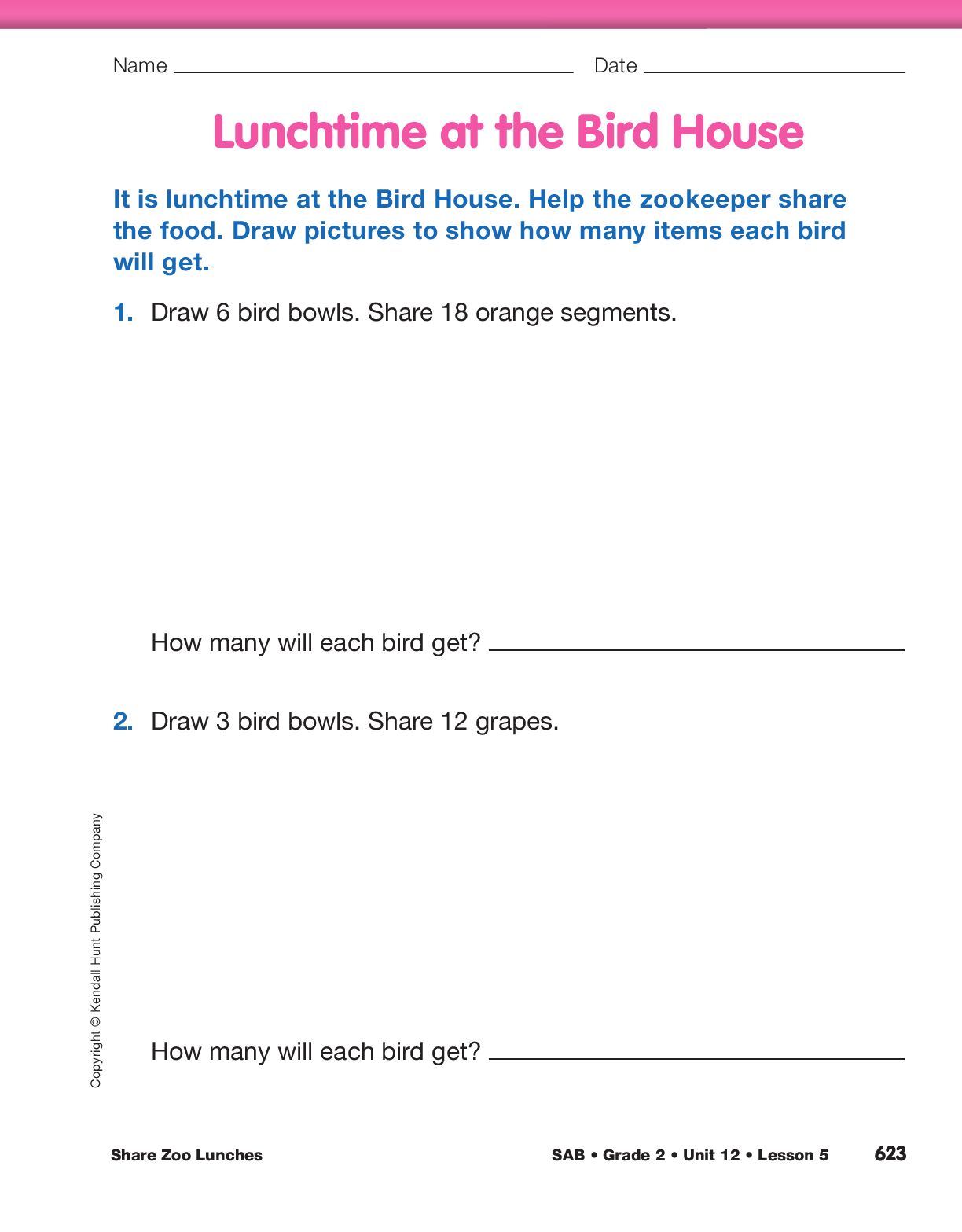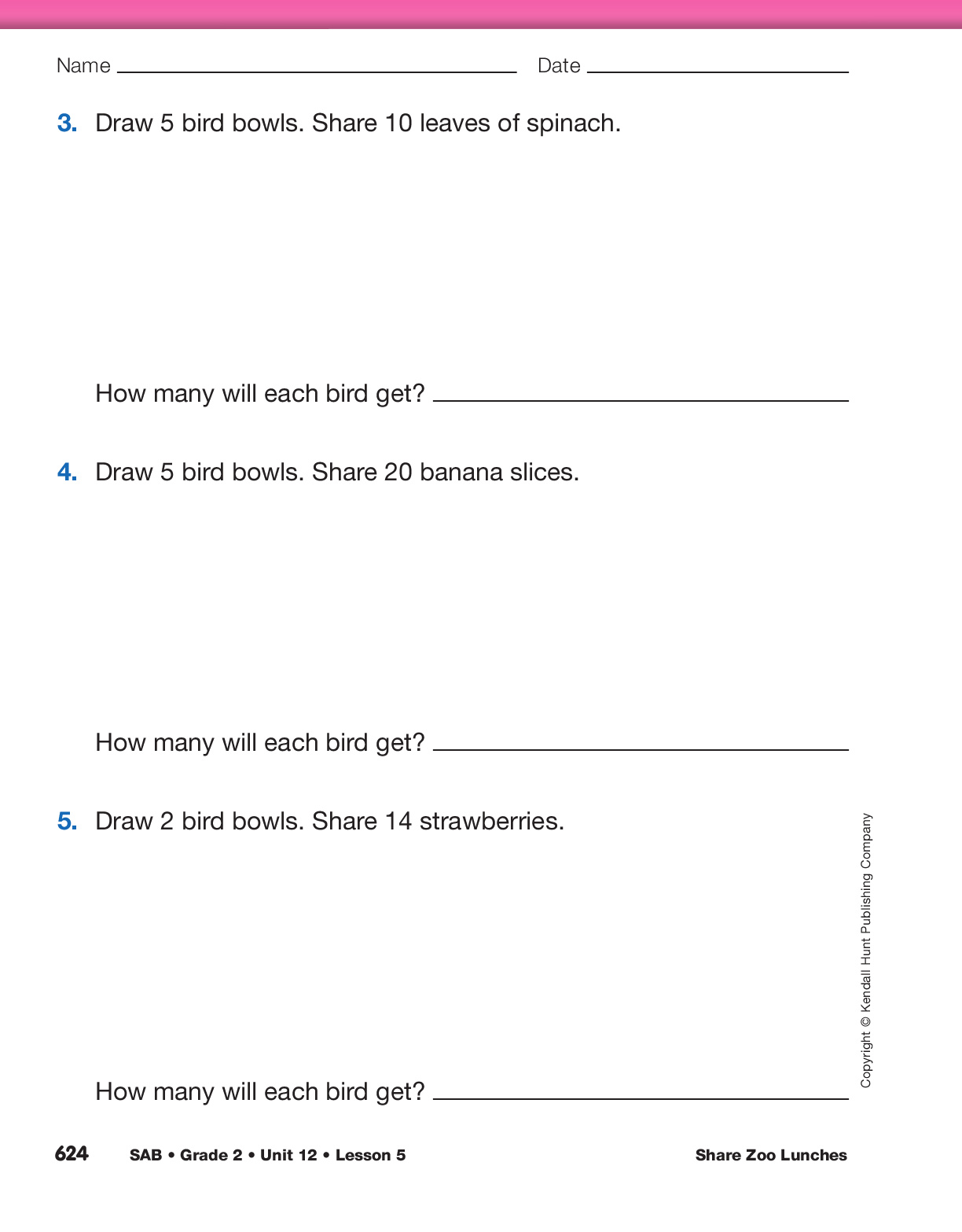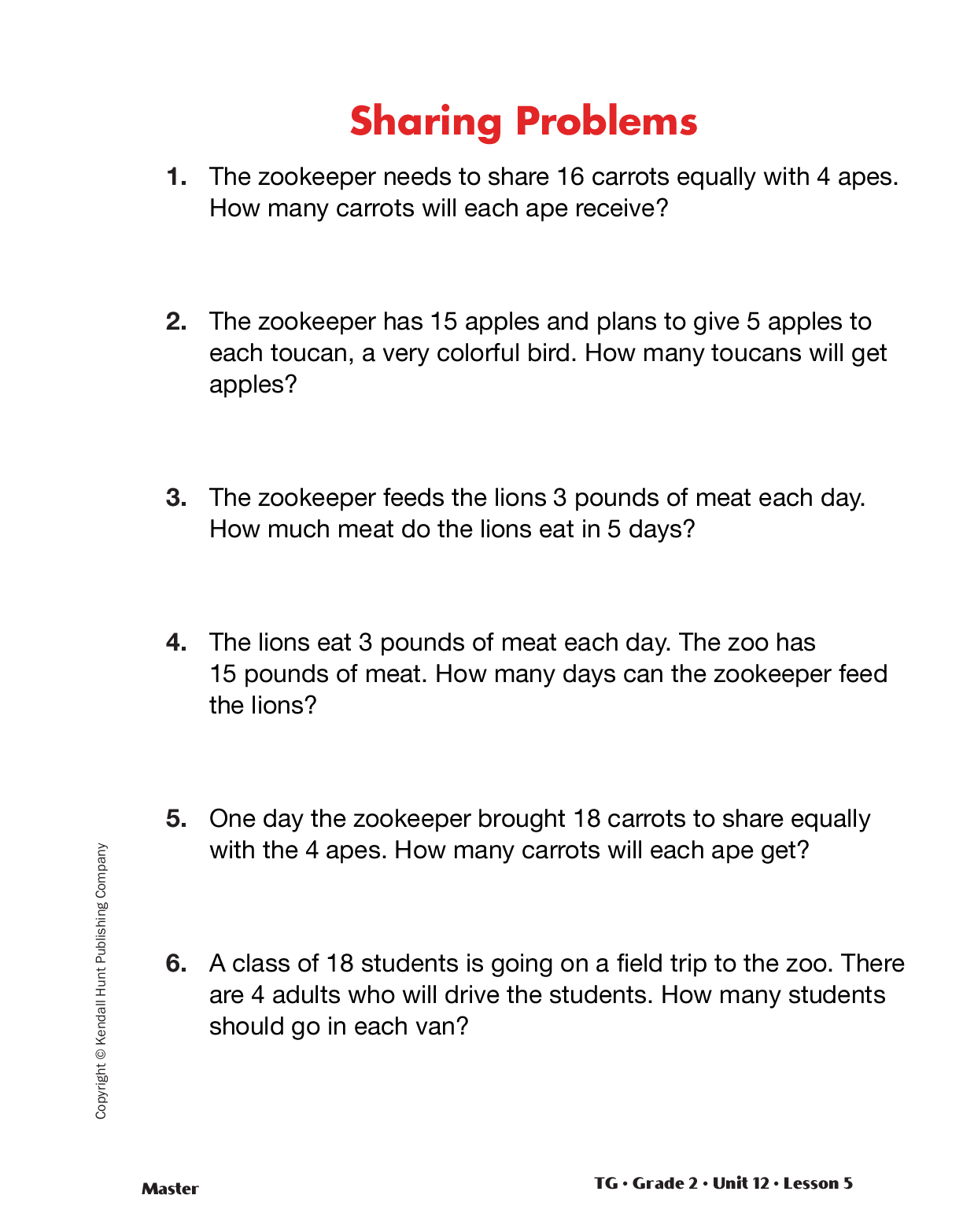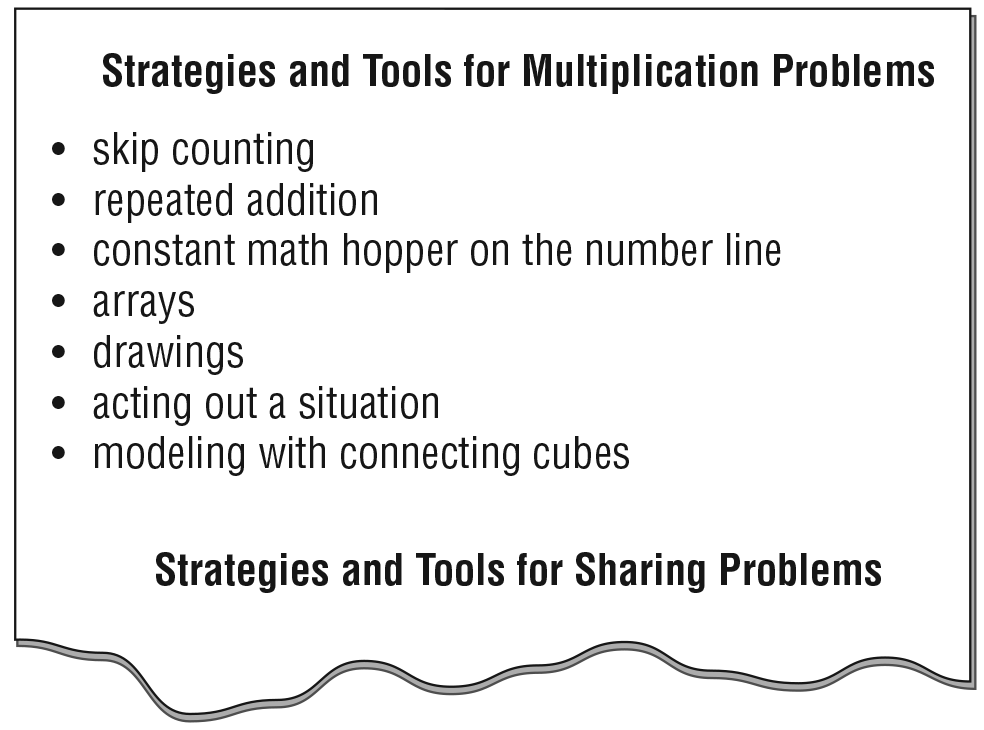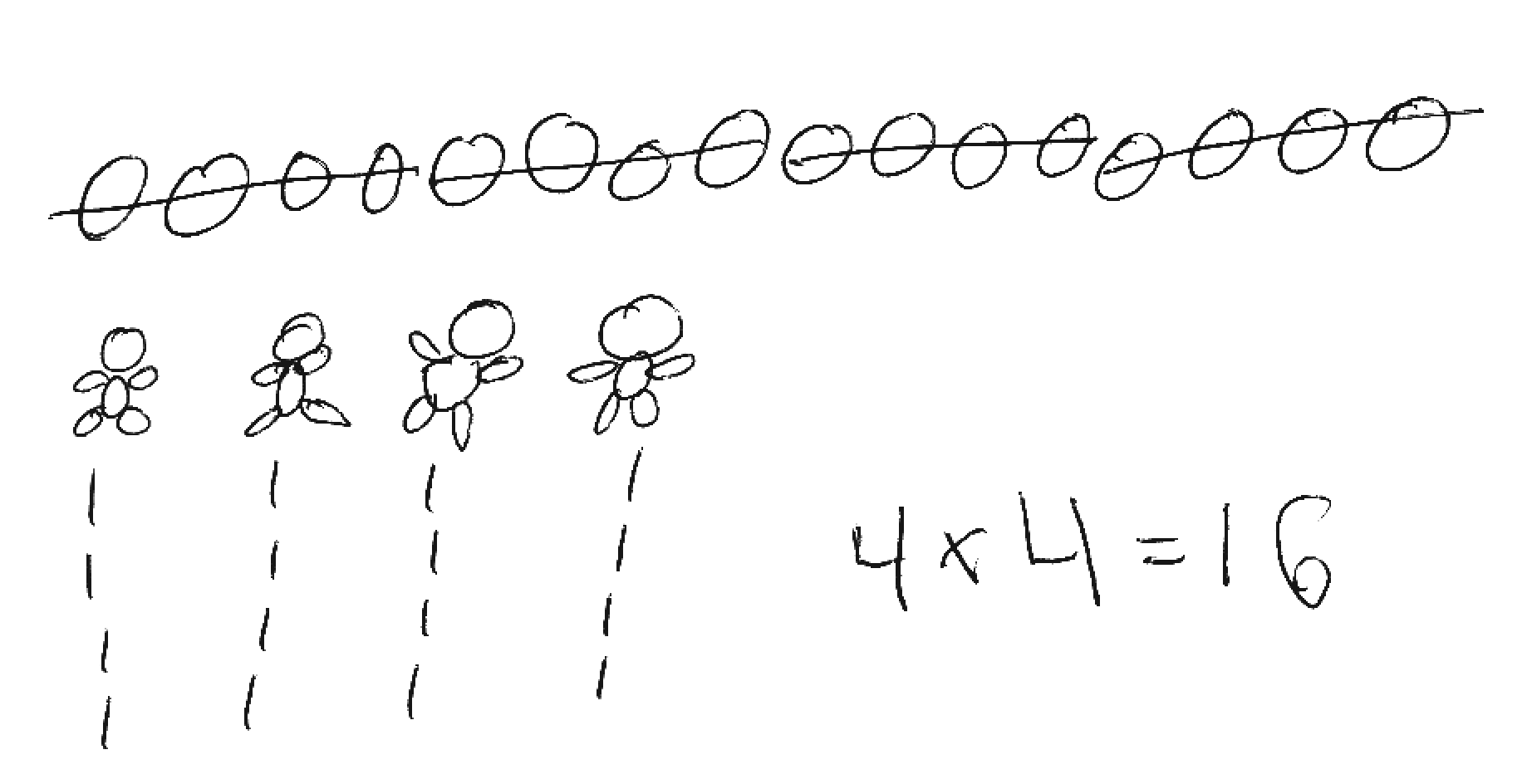Introduce Division Situations with Sharing.
Introduce the lesson by reviewing strategies and
tools students use to solve multiplication problems.
Display the chart you prepared prior to the lesson.
See Materials Preparation. On the first section of the
class strategies and tools chart, have students help
you make a list of strategies and tools they use to
solve multiplication problems.
- What are some strategies and tools you use to solve multiplication problems? (See Figure 1.)
Explain that students will use some of the same strategies and tools in a different way to solve fair share problems.
- The zookeeper needs to share 16 carrots equally with 4 apes. How many carrots will each ape receive?
Ask students to work in pairs to determine strategies for solving the problem. Have connecting cubes, tiles, or other counters readily available.
This activity explores both types of division: partitive and
measurements. Remember, it is not important for students to
distinguish between these types of division situations but to
have experience with both. The common element in both
situations is that students know how many in all and want to
find out about equal groups.
Share Strategies for Equal Shares. Upon completion,
ask students to share strategies for solving the
problem. Ask students which strategies and tools
they used to solve
Question 1.
- How did you solve this problem? (See the Sample Dialogs and Figures 2 and 3 for sample solution strategies.)
- What does each number in your solution represent? (16 is for the carrots, 4 is for the apes, and
4 is for the number of carrots each ape will receive.)
- How did you decide which labels to use in your answer? (The question asks how many carrots, so I said 4 carrots.)
For partitive division problems, the number of
objects and the number of groups is known, but the
number in each group is unknown. Students often
use modeling with manipulatives, acting out the situation,
drawings, or trial and error to solve partitive
division problems. In the Sample Dialogs, Student
#1 started dealing 1 carrot to each ape and kept on
giving carrots until he reached 16. Student #4 used
trial and error to solve the problem.

The following set of dialogs is excerpted from a video of a second-grade classroom. Four different students explain and
demonstrate on the overhead how they solved Question 1 on the Sharing Problems Master.
Student #1
I draw 16 carrots and 4 apes. I cross out 4 carrots and give
one to each ape. I cross out another 4. I cross out another 4.
[marks a tally under the picture of each ape each time he
crosses out 4 carrots] My number sentence is 4 × 4 = 16.
[See Figure 2.]
Student #2
What I did was I put 16 here [writes 16] and I took away 4 and
I got 12. Then I took away another 4 and I got 8. Then another
one and I got 4 and I still have enough for another four and I
got zero. So I count how many times I got 4. 1, 2, 3, 4 [pointing
to the 4s]. The answer is 4 carrots. [See Figure 3.]
Student #3
I know that 4 + 4 + 4 + 4 = 16. So if you divide it up into
groups, there’s 1, 2, 3, 4 [student circles each 4 as she
counts] and there’s 4 apes. So there’s 4 in each group.
Teacher: Does everyone understand what she did? She used what she knew about addition. She knew that 4 fours is 16.
Student #4
I drew tally marks. I didn’t draw apes. I wrote Ape #1. I took 4
for Ape #1, another 4 for Ape #2, for Ape #3 I had 4, and for
Ape #4 I got 4. [Student circles 4 tallies for each ape.]
Teacher: How did you know they each got 4?
Student: I did 2.
Teacher: You did 2s first? And did that work?
Student: No. Then I tried 5 and it didn’t work. Then I tried 4 and it worked.
Have students complete the Lunchtime at the Bird House pages in the Student Activity Book. Explain
that in each problem the birds have to share the food fairly so that each receives the same amount.
Encourage students to use any strategies or tools that make sense to them.
Upon completion, use the display of the Lunchtime at the Bird House pages to have students share strategies for solving the problems.















